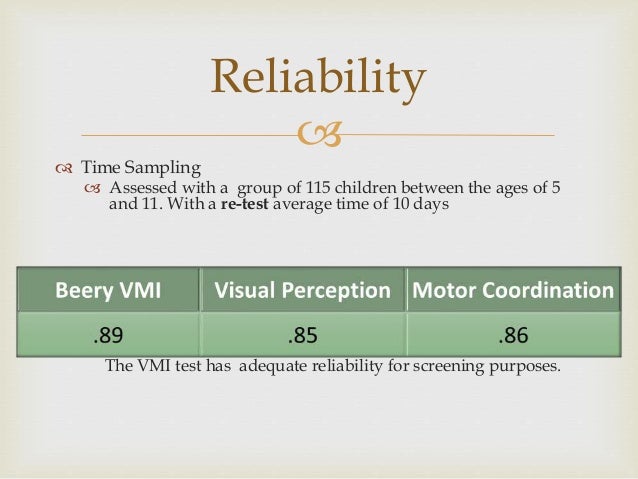Developmental Test Of Visual Perception 2nd Edition

Test review of the Developmental Test of Visual Perception Second Edition. Impara (Eds.), the twelfth mentl measurements yearbook. Lincoln, NE: Buros Institute of Mental Measurements. Visual–perceptual skills of children are often assessed using the Developmental Test of Visual Perceptual Skills–2, 2nd Edition (DTVP–2). The factor structure of the four motor-free DTVP–2 subscales was examined. The Developmental Test of Visual Perception, 2nd Edition (DTVP-2) is an assessment evaluation test designed for use with children ages four to ten years with learning. Developmental Test of Visual Perception- Second Edition (DTVP-2) The DTVP-2 is a battery that measures different but interrelated visual perceptual and visual motor abilities. The DTVP-2 is intended for use with children 4 through 10 years old.
Developmental Test of Visual Perception (DTVP-2) Why do we use this test? Bootstrap Responsive Website. Purpose: To measure a child's visual perception & visual motor integration skills. This will help us to find and document any difficulties the child may be experiencing in these areas. There are 8 subtests: 1. Eye-Hand Coordination 2.
Position in Space 3. Figure Ground 5. Spatial Relations 6. Visual Closure 7.
Visual Motor Speed 8. Form Constancy What will you need? Materials: Testing Manual Picture Book Profile/Examiner Recording Form Response Booklet Scoring Interpretation DTVP-2 in OT Population Assessed Age range: 4 - 10 years old Used with kids who have concerns with visual perception deficiencies. Image from: Strengths Can be administered to Non-English speaking children. Can be administered to hearing impaired children. Standardized High reliability and validity Weaknesses Norms for this test are over 20 years old. May not predict school performance.

Does not test for sensory or cognitive difficulties. Should not be used in a group setting.
Authors 1st Edition: Marianne Frostig Maslow Lefever Whittlesey 2nd & 3rd Editions: Donald D. Hammill Nils A. Pearson Judith K.
Voress Administration The DTVP-2 yields five types of scores: raw scores, age equivalents, percentiles, subtest standard scores and composite quotients. The interpretation of the scores will yield information about the child’s general visual perceptual ability and specific strengths and weaknesses.
Anthony Harris Rachel Gilligan Lauren Goetz Image from: References Individually, in a quiet space. Administer all items on subtest 1 and 7. On subtests 2, 4, 6, and 8 continue testing until the ceiling point is reached.